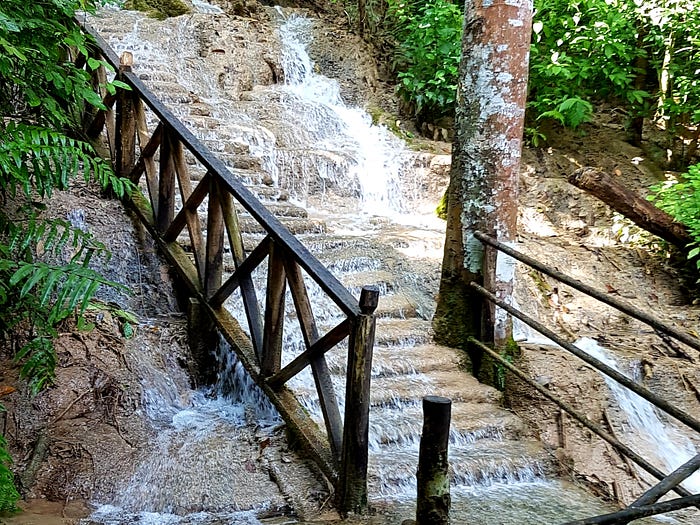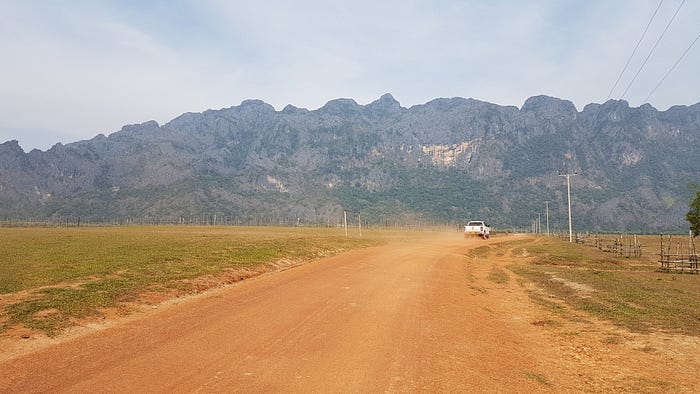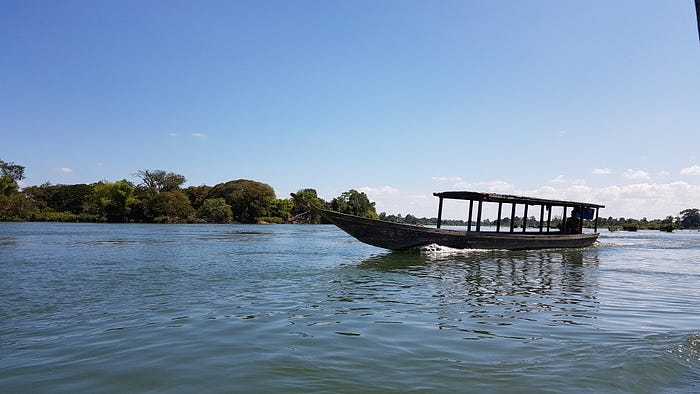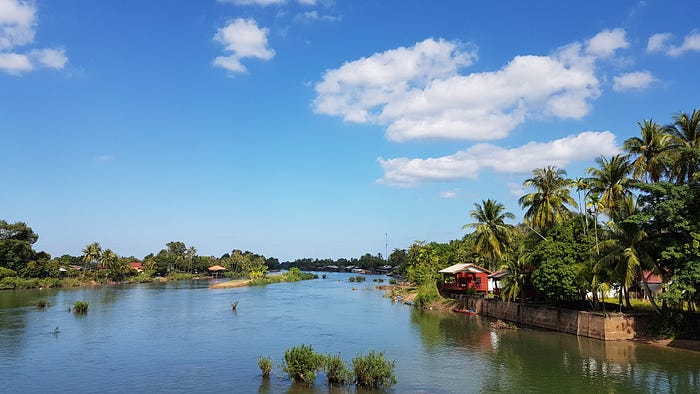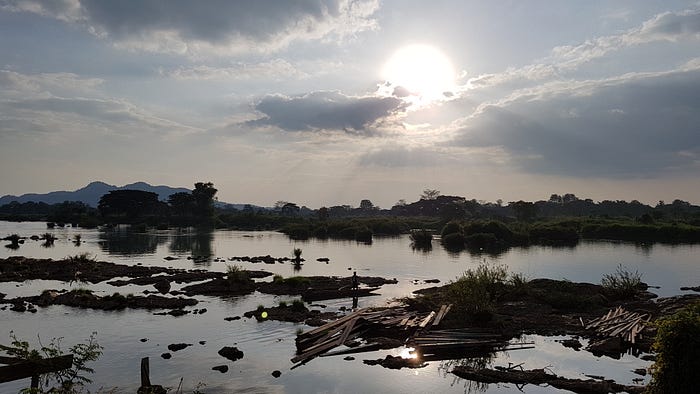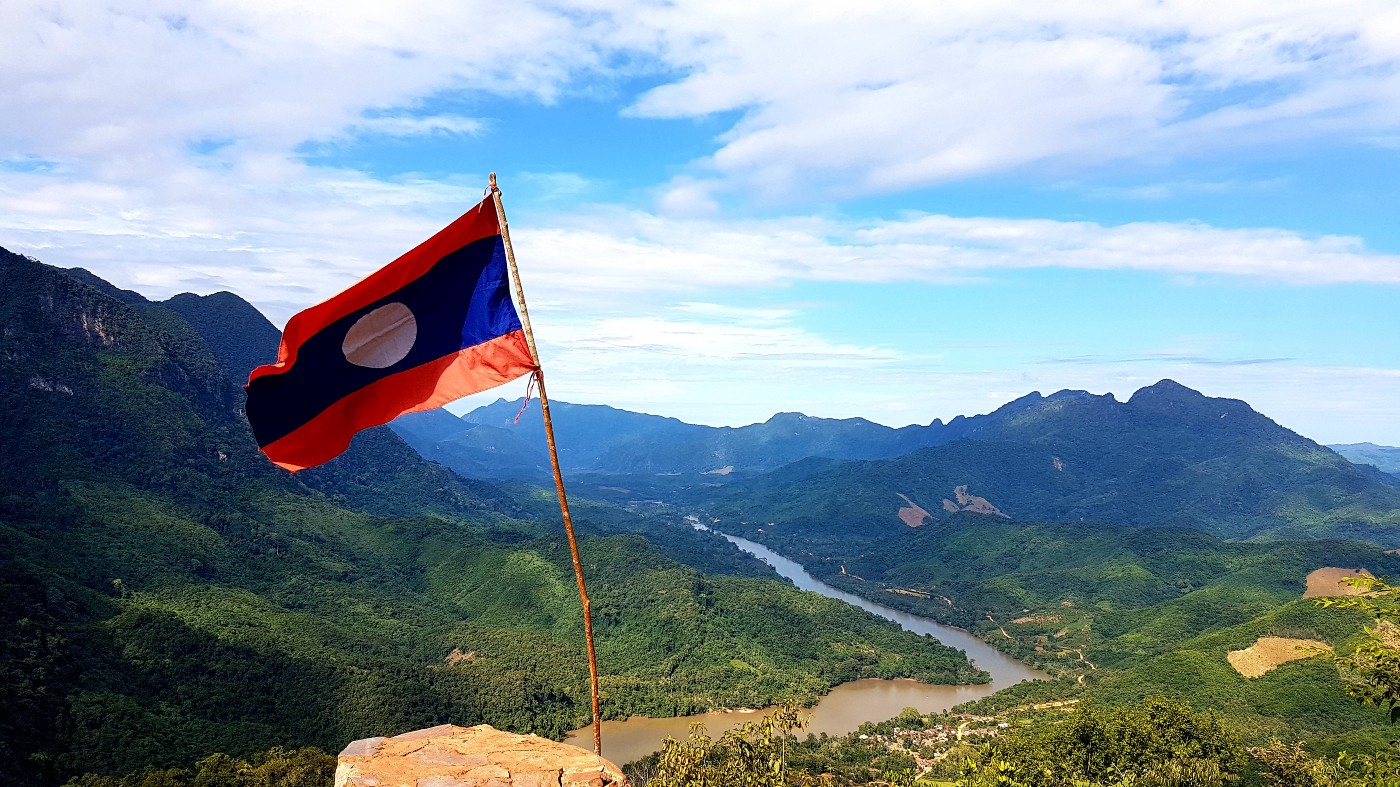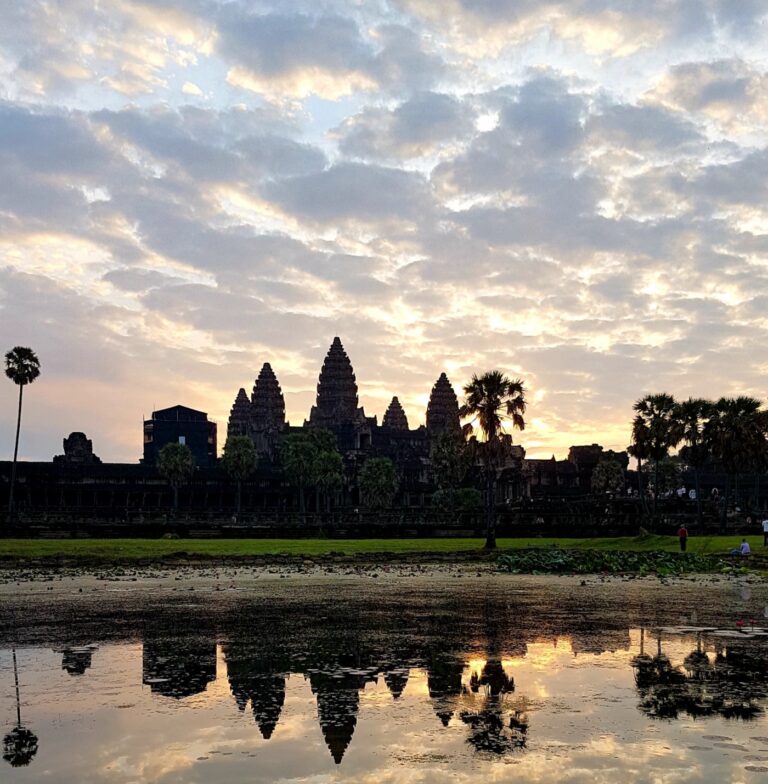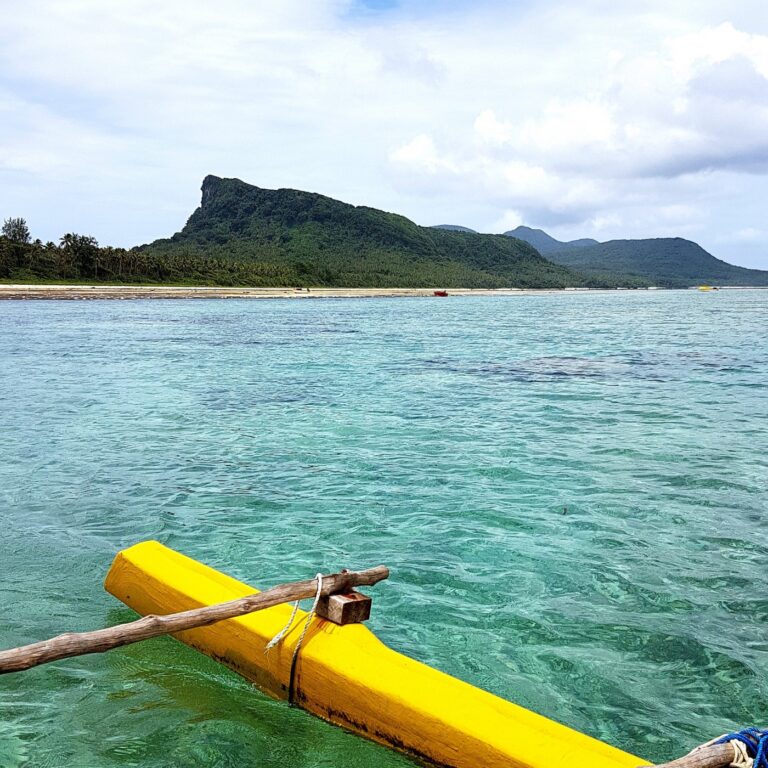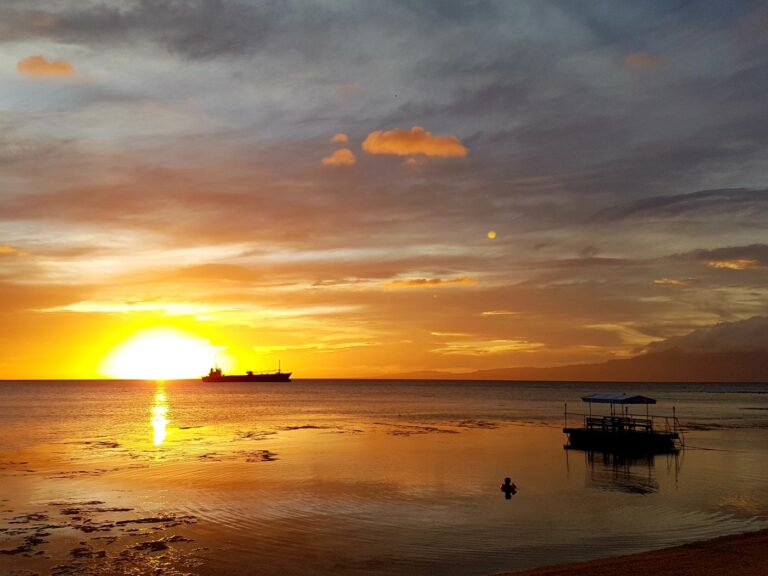(originally posted on Medium on Nov 22, 2019)
Impressions after four weeks of travel
Laos has some amazing landscapes to see and visit. From mountains and forests, to rivers and waterfalls, to oversized caves and even some islands. This landlocked southeast asian country offers a lot to discover.
Itinerary and landscapes
We have visited Laos for 26 days. We started our trip in Luang Prabang. From there we first explored some of the north, before we headed south, and eventually left through the Cambodian border.
Along this trip we have learnt more about the Laos heartbreaking past during (and ever since) the Vietnam war (Luang Prabang: UXO museum (free entrance; UXO = unexploded ordinances)).
We went kayaking in midst the mountains and forests (Muang Ngoi). Looked at the valleys from high up (Nong Kiaw). And trekked through the jungle, visited some ethnic villages, and learnt about the rubber production (Luang Namtha).
We traveled on the Mekong by boat (slow boat from Huay Xay to Luang Prabang). Climbed through caves (Thakhek loop). And went cycling on the islands in the south.
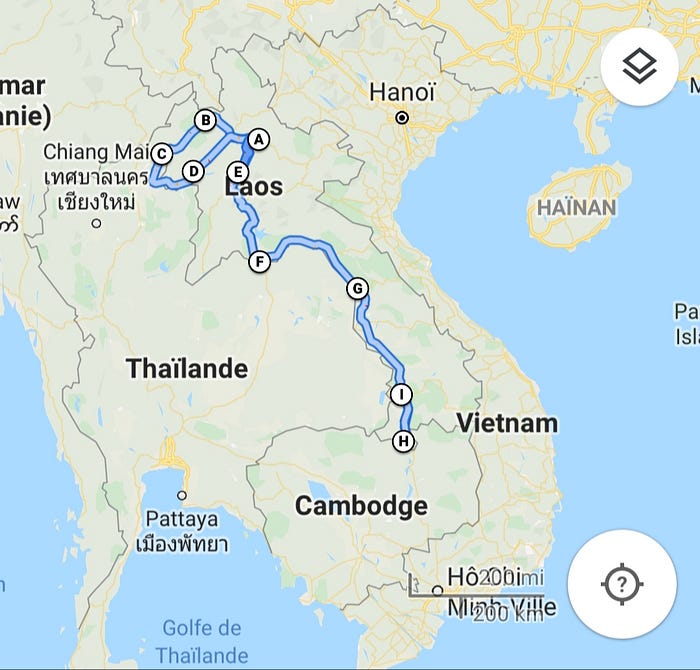
In more detail, we went to
- Luang Prabang
- Kuang Si waterfalls
- Muang Ngoi
- Nong Kiaw
- Luang Namtha
- jungle tour
- Huay Xay
- Pakbeng (slow boat stop)
- Luang Prabang
- Thakhek (loop)
- Thalang
- Konglor
- Pakse
- 4000 islands (Si Phan Don)
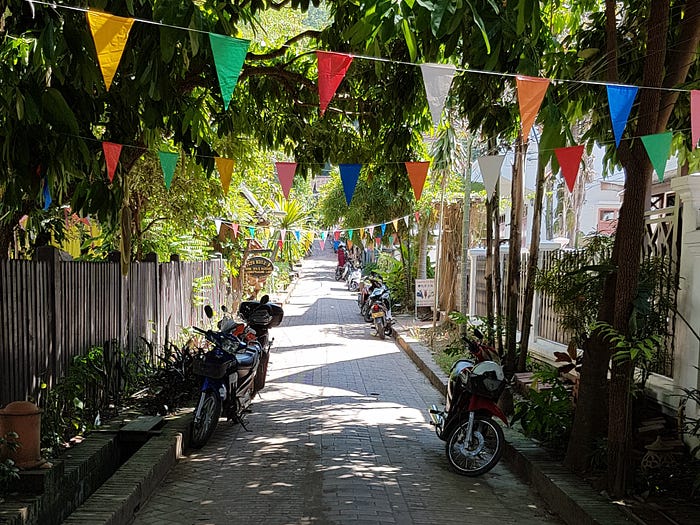
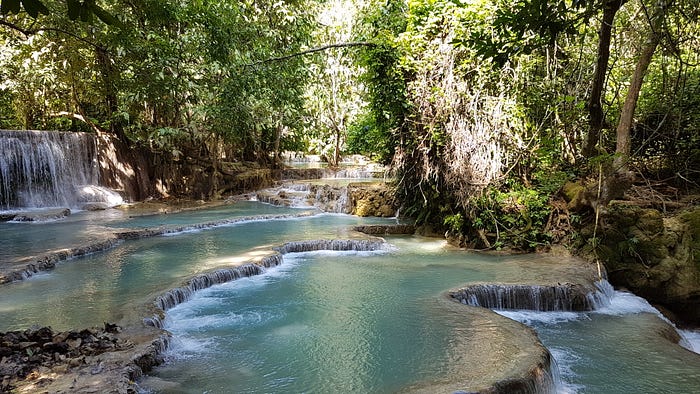
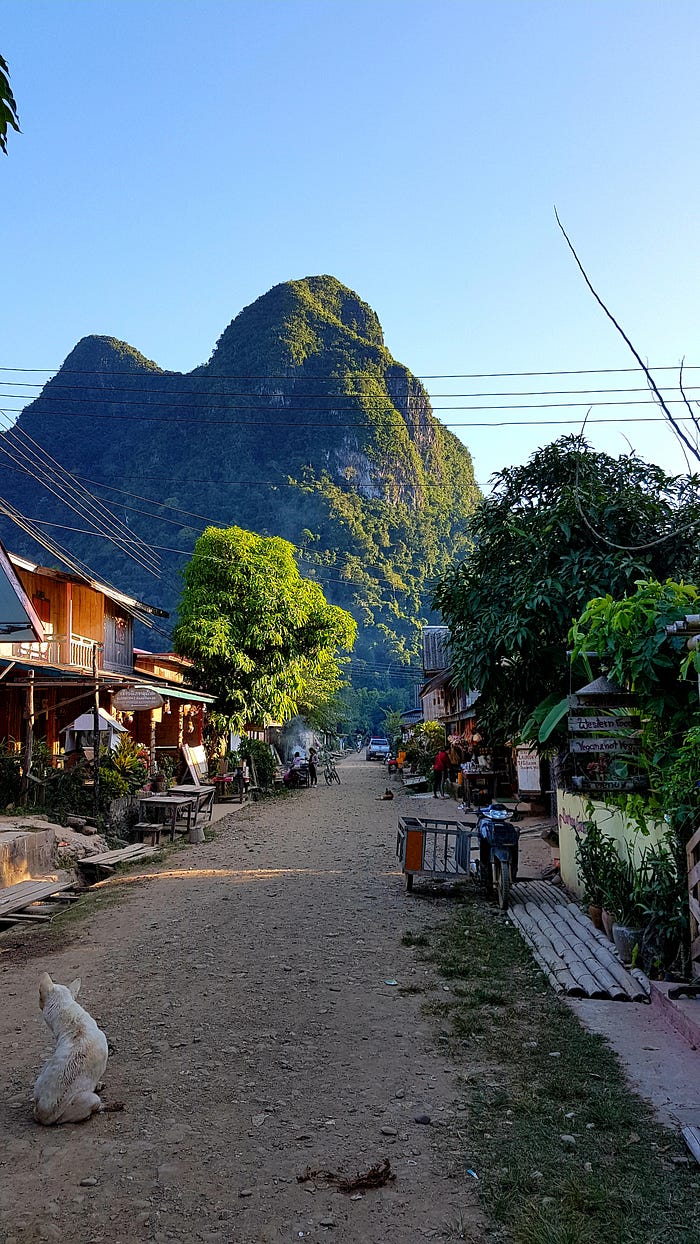
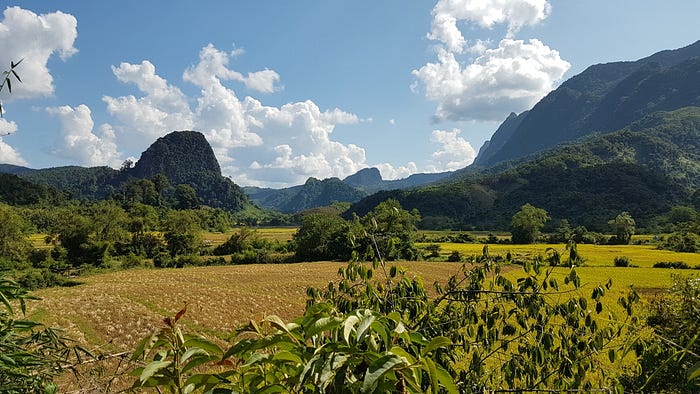
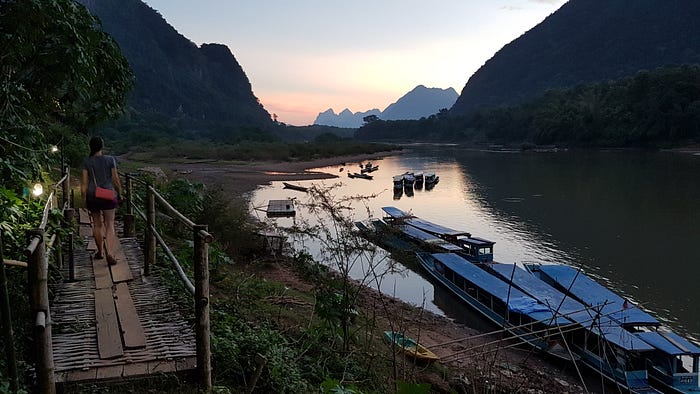
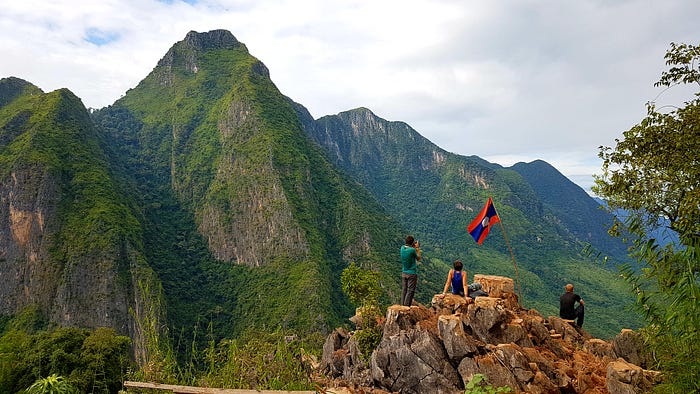
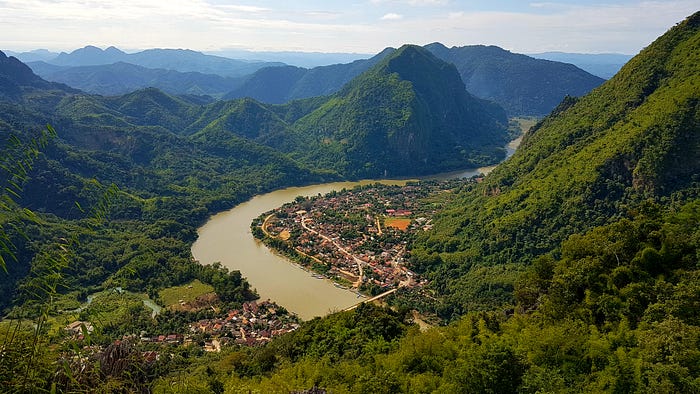
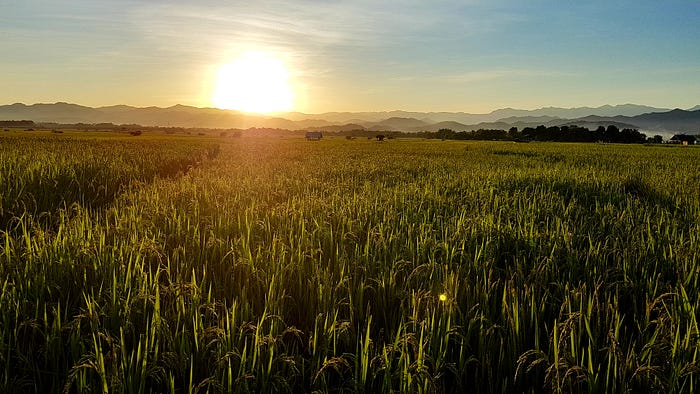
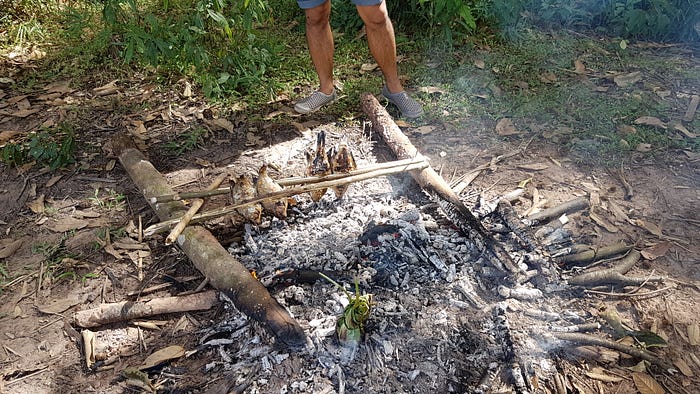

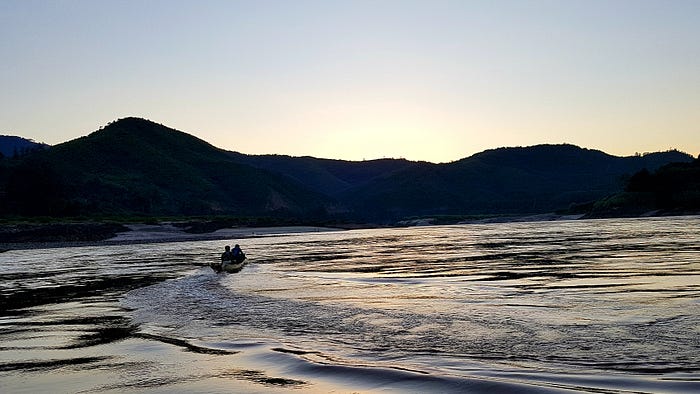
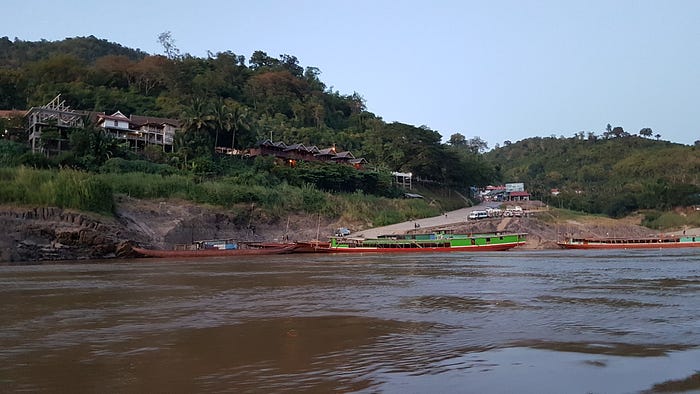

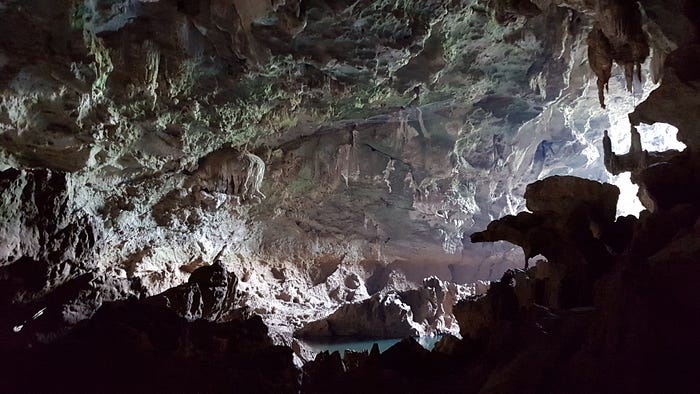
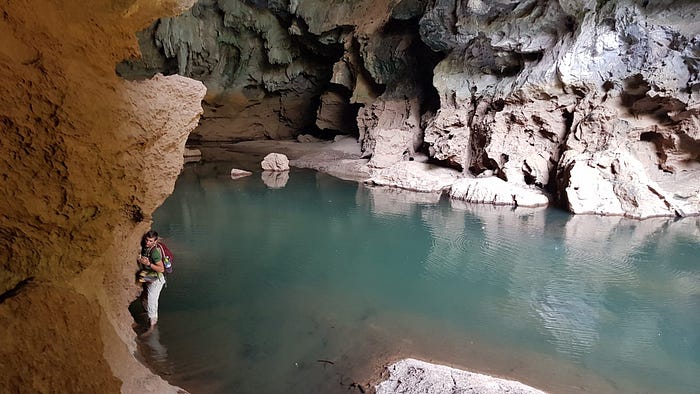
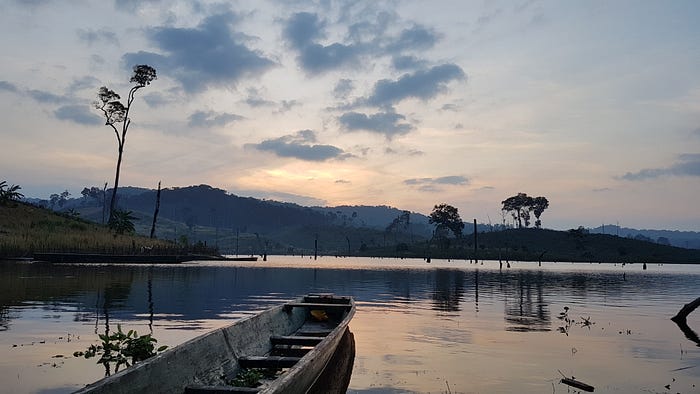
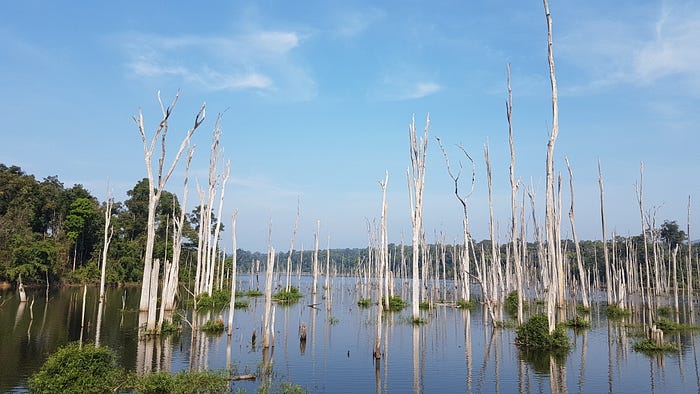

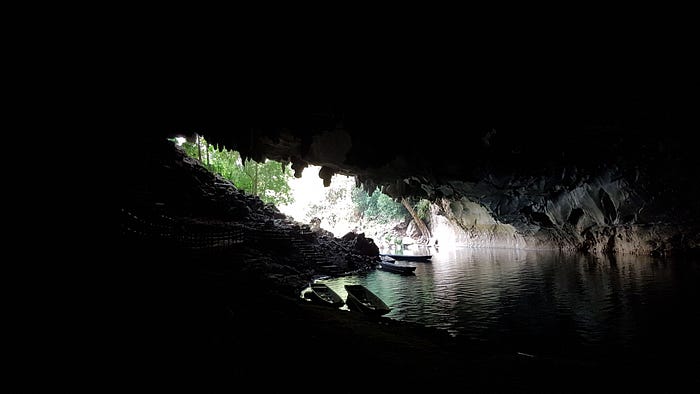
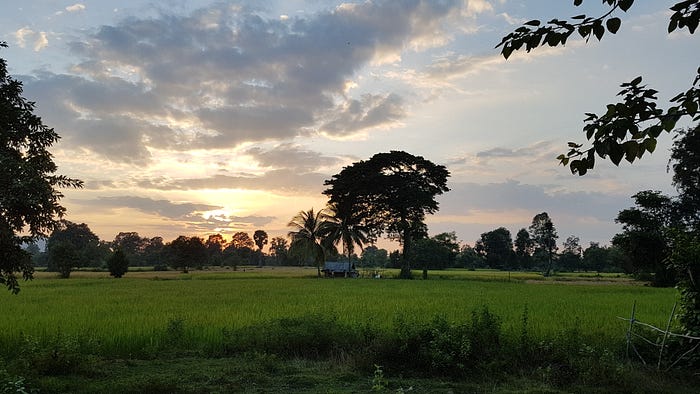


Transportation infrastructure
The roads are in good conditions (Oct/Nov 2019). This was a very good surprise compared to what we have read online.
Respectively, I have to make a distinction: there are roads solely for tourists, and there are the roads used by Chinese trucks to transport goods for the Chinese investment projects.
The roads for tourists (and locals) are sometimes in a bad state: big holes, sand/dirt road, etc. The main roads however are used for the Chinese investment projects, and those roads are in very good condition.
But in many cases even the tourist roads are renewed. For example, the road between Luang Prabang and the Kuang Si waterfalls was freshly remade. And on the Thakhek loop, the road to and from Konglor was redone — though, when coming from direction Lak Seo, the first sign indicating Konglor (in Khoun Kham) leads over gravel and sand. The good road leaves the main road at the bus stop in Songthaew.
Organized rip-offs called tuk-tuk
The tuk-tuks are an important and reoccurring topic regarding the Laos transportation system. Not because they’re useful, but because they’re the epitome of a whole in-your-tourist-face policy.
The different cities can be connected with by bus. At least on paper. In reality, the busses stop at a station several kilometers outside the city. Once you’ve left the bus, there is an army of tuk-tuks ready to take your money to take you from the bus station to the actual city you’ve just taken the bus to (or thought to have).
In a way, this policy would make sense: have large bus stops outside the city and keep the city center for living space. Except, those bus stations aren’t that exceptionally large. And there are bus stops all over the city.
Ok then, it would make sense to have the large busses to stop outside, and to have smaller local busses to connect the periphery with the center. But that’s not how the traffic works in Laos. The only way to go from the bus stop to the city is by tuk-tuk.
In a way, those tuk-tuks are said small local busses. But they sure don’t feel like it. The exception is the slow boat (see below), there tuk-tuks indeed do take the role of connecting the port with the center.
The locals (or at least Lao, maybe from another province) too have to rely on the tuk-tuks from bus stop to center. In at least some of the cases, they had to pay the same price as the western tourists who just had negotiated the amount; without active participation from their side.
The tuk-tuk price to go from the bus station to the city starts at typically 30k Kip per person. They’re very willing to drop to 20k Kip per person. Yet, this is still a ridiculous price, given you just paid 70k Kip for a 6h bus ride.
It pays off to conspire with other western tourists: each tuk-tuk drivers has one ride to do per day, before they can go back in their hammock. They’re not leaving you there without taking your money. This means (as long as no one gets on the tuk-tuk for the 20k/p price) you can wait as a group and announce something like 10k/p, which leaves you with 15k/p in the end.
Bus prices
In the north of Laos (north from Vientiane) the bus prices were approximately 20k Kip per hour of travel per person. This typically included the pickup from your hotel to the bus station.
If you manage to get the ticket from the bus station directly, you save about 20k Kip. However, often it is difficult to understand which bus station will be the right one.
Some of the stations are several kilometers outside the city. For those, in some cases the comments on MAPS.ME indicate what station serves which bus to where. But sometimes that depends on whether it’s a regular or a VIP bus, whether it is a fix bus stop or a mobile one, etc.
Some of the bus stops are a moving targets without fix bus station. Our bus from Luang Prabang to Nong Kiaw, for example, was a minivan. To get to it, first, a tuk-tuk picked us up in front of our hostel. Then, the tuk-tuk roamed the whole city to pick up other passengers. Eventually it dropped us off at the minivan … which happened to have been stationed on the road behind our hostel where we’ve started from…
The minivan then left, but only 2/3 full. After another few corners in the city we met another minivan. The passengers of this other minivan then joined ours, before we finally headed off to Nong Kiaw. I don’t know how one could find such a minivan without the pick up service.
On our travel from Luang Prabang to Thakhek, we first took a sleeper bus to Vientiane, which we wanted to follow up with an early bus to Thakhek once in Vientiane. We reached Vientiane at the Northern Bus Station. From there we didn’t see buses advertised to go south.


The tuk-tuks were very helpful … “Thakhek? Yes, I know where. 30k per person.” This, of course, we couldn’t accept. First, we wanted to know which of the many Vientiane bus stations will be the right one (because just because a tuk-tuk says it knows where, doesn’t mean it actually knows it!).
After a few minutes of a deaf conversation, suddenly there was yet another guy beside us. He had overheard our conversation: “You Thakhek? I Pakse!” He pointed to a big modern bus with a sign in the window “Pakse”. Thakhek is one of the official stops along the way to Pakse.
It turns out this bus happened to be stationed at the northern bus station over night. We managed to buy a ticket from him for a reasonable price. We then had to wait another 1.5h, before the bus headed to the “New Southern Bus Station”, from where the bus officially left for Thakhek. We felt very lucky to have found this bus connection! And how comfortable it was on top of everything!
Regarding reasonable price: while the buses costed about 20k/p in the north, this lowered towards 10k/p in the south (of Vientiane). Hence, we accepted the proposed 70k/p for the 5-6h drive to Thakhek.
Slow boat to Luang Prabang
The slow boat is 200k Kip per person and leaves Huay Xay at 11:30. It is very easy to buy at the official ticket office at the pier in Huay Xay.
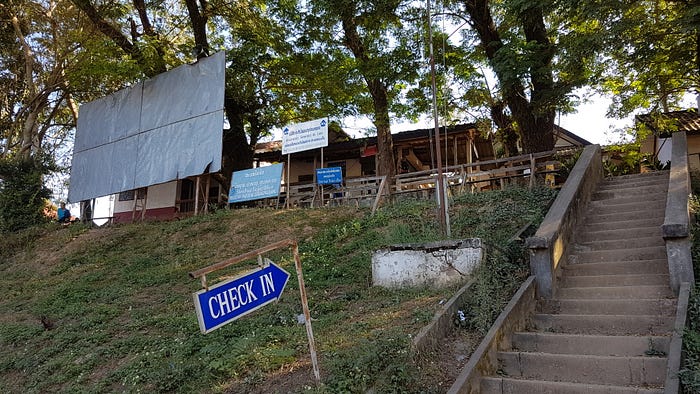
When in (well … 10km before) Luang Prabang, the tuk-tuk service costs another 20k Kip per person. This price is not negotiable, and you have to buy a ticket in the ticket office.
While still in Huay Xay, once onboard, towards 11:00, a guy with good English will explain you how the boat ride works: “Tickets please. Err, sorry every one. Can every one hear me? Please, sorry! Thank you. Tickets please” He takes a ticket from a first passenger and shows it to every one. “Welcome to Laos.” (Huay Xay is the first stop for many coming from Thailand)
“Please pay close attention to what I’m about to explain you. Laos is a nice country, but like in every country there are good people and bad people. I want to warn you about the bad people. […] This boat will stop over night at Pakbeng.”
“There the people will know that you need accommodation and will ask for a very high price. Please note that they will ask for a higher price than what you are used to in Thailand, because they know you don’t have options.”
“Who here does not have a reservation yet? I can make you a good offer for only 50k per person.” That means 100k per couple.
And what about the ticket control? Nope, that wasn’t an official guy. He just needed a ticket as a prop to suggest that he would be official. You see, he’s one of the “bad” guys he was warning you from!
Don’t panic, don’t buy the room from him. At Pakbeng they indeed do know that you need a room. And they will be at the pier.
But since the public slow boat will arrive last, they also know that they won’t fill their rooms if they don’t find a client among these passengers. We got a room for 40k for the couple (in a hotel that was $20 on booking.com (though, would be overpriced for what it was))…
Oh, and if you’re interested in the expensive hotel: at the pier in Pakbeng they advertise it at 40k/p.
Boat to and from Muang Ngoi
The boat from Nong Kiaw to Muang Ngoi is 25k Kip per person, and leaves at 10:30 and 14:30. This is the price if bought at the pier (see MAPS.ME). There are many transport agencies who are very happy to ask you to pay significantly higher prices; up to a few meters before the ticket office!

Buying the ticket in one of those agencies is not only a waste of money, it’s a waste of time as well: they give you a “pick-up” for the 500m to the pier, for which you have to be in the agency an hour before the boat actually leaves.
This being said, the ticket office is not occupied before ~2pm, as the employees are in lunch break.
In Muang Ngoi, the ticket office is at the stairway to the pier. There is a small sign “boat ticket” with an arrow; though it is drowned among all the big signs of the hotels/restaurants. For the sake of your fellow travellers, please go buy a ticket before getting on the boat.
You’ll have plenty of time to realize that everyone is standing in the shade with a piece of paper in their hands. Ask them where to find the ticket office. In our case a French tourist tried to save the 25k/p. This caused chaos because the number of collected tickets didn’t match the number of passengers.
And since the boat driver couldn’t sell a ticket himself (he’s supposed to collect the tickets, not sell them) he had to run up the stairs and back down to bring the money to the ticket office and get a ticket, once the French guy was willing to announce that he was the one who didn’t buy a ticket yet.
This meant the boat left with a half hour delay (additional to the laidback “maybe we should slowly get the passengers on board, and oh, who could have foreseen that we need to prepare a 2nd boat” delay). The passenger with a connecting bus in Nong Kiaw got a bit edgy. Morale of the story: don’t be a smart ass, buy the ticket.

Important phrases
Sa-bai-dee: Hello
Khob-chai (lai lai): thank you (very much)
Laka tao dai? : How much is it?
Food
The food in Laos is difficult to describe, and especially to put a label on. Though, one adjective that clearly stands out: inconsistent.
The taste was sometimes good and sometimes bahh. The servings were sometimes so small that even two plates weren’t enough, while other times a single plate would have been enough for two.
In general, the street food and local food sheds were on the bahh side. At the same time, restaurants weren’t more expensive than the street food, but the taste was better. Of course, we ended up spending more money in the restaurants after all. But that was because of what we ate.
The local food stands rarely had a menu, and the one word they understood was “soup” (but don’t ask whether it’s with chicken or vegetables, or… It’s soup. And you’ll see what you get). Sometimes instead of “soup” it was “rice”, including a presentation of what exactly was in the rice cooker, and assembling the plate by taking ingredients out of the fridge (and/or put them back when we said no).
The noodle soups and fried rices were always 10000 Kip in the night market, and 15000 Kip in the food stands. Sometimes the taste was good, sometimes not. Sometimes the serving was huge, sometimes too small. But the price was always the same…
The local/street food more often than not lacked in flavor. We don’t know whether they are too afraid to spice the food too much, or whether they themselves eat that way. But they always expected us to flavor the food ourselves; the maggie sauce, suger, and shrimp powder put on the table. Sometimes they got impatient with us as we didn’t put enough of those additional flavors on our plate. So they gestured wildly that we should take the maggie sauce and put it on.
In restaurants, the noodle soup and fried rice was also only 15000 Kip. But the taste was consistently good (not amazing, but good). However, the servings varied wildly from huge to tiny. And it wasn’t that fancy restaurants served little while unattractive places served big. Nope, everything was a big mix of everything.
In the restaurants, the best was to refrain from fried rice and noodle soup, and to eat some of the other dishes. Those other dishes (mostly Thai (inspired) food) were consistently better. The serving size remained a big surprise, though. And the price of the dish had no correlation with the size.
Regarding food, nothing made sense to us. So, once we had found a place with good taste and servings we stopped exploring and went there on a continuous basis instead.
People
Laos people are afriendly. It’s not that they would be un-friendly, they’re actually very friendly at times. But on the grand scheme of things, they are very distant and it’s very difficult to tell whether they are annoyed by our presence or not. Then it’s also the question, whether they’re annoyed with us personally (did we do something wrong, dress inappropriately, etc.?), or tourists in general.
In several instances they appeared to be highly inconvenienced by us. For example when we showed up in a restaurant during lunch time and thought about having lunch. But that was the time the staff had lunch themselves, so they didn’t want us.
The laotian distance (disinterest?) had its upsides: very rarely did they try to talk us into buying something that we didn’t need. Even tuk-tuk drivers weren’t very forceful.
I have read a lot about the laidback attitude of Laos people. In my mind “laidback” meant that the people aren’t stressed and live from day to day. In a way this is true.
But in my experience, I would describe their form of laidback as follows: Don’t do anything today that you could do tomorrow, or the day after, or — you know … like — next year. If something is broken, then so it is. And very soon it has “always” been broken, and always will be.
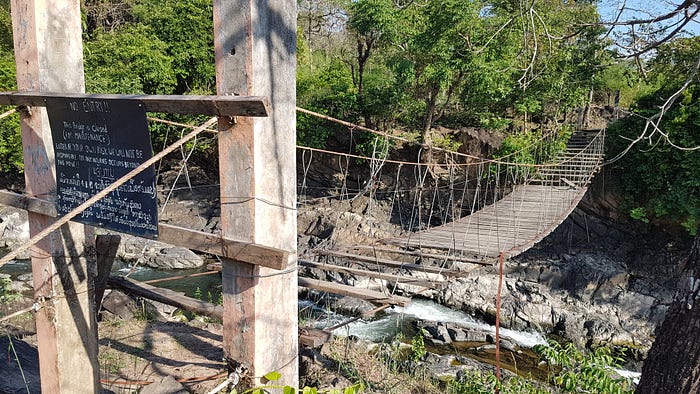
There are a few infrastructure projects that had been realized through development aid (proudly explained on big panels). Well, and now the fountain is broken. And so it is.
Yet, don’t confuse this attitude with being lazy. Laotians aren’t lazy! (I can’t speak for the tuk-tuk drivers, though.) For example, once they put themselves to the task to cook, they’re very busy in the kitchen and prepare everything fresh for every client. In fact their lack of preparation means your meal is fresh and made on the spot.
Summary
Laos was a good experience. The landscapes are an amazing view, and I’m overall content to have visited this country. Nonetheless, I didn’t find the spark that made me fall in love with this country.
Further reading
Here some resources that we found useful to navigate through Laos. The resources are in the order of our itinerary, but the order per destination is somewhat random.
Laos in general
https://www.indietraveller.co/laos-travel-guide/
Luang Prabang
“Laidback Laos” by Prajwal Madhav https://link.medium.com/dsWiO9O0N0
Muang Ngoi
https://www.thebrokebackpacker.com/backpacking-laos/
Nong Khiaw
http://www.wildtrips.net/laos-trip.htm
https://www.blouptrotters.com/carnet-de-voyages/laos/itineraire-1-mois-voyage-au-laos/
https://www.indietraveller.co/laos-travel-guide/
Luang Namtha
https://www.indietraveller.co/laos-travel-guide/
https://worldwildbrice.net/2018/03/26/luang-namtha-laos-guide-conseils-voyage/
http://voyagelaos.indochinacharm.com/luang-namtha-au-laos-une-destination-ideale-pour-les-randonnees/
https://www.hobomaps.com/TravelNamtha.html
Huay Xai (mainly regarding the slow boat back to Luang Prabang)
https://www.indietraveller.co/laos-slow-boat-or-bus/
https://www.earthtrekkers.com/slow-boat-mekong-laos/
https://www.taylorstracks.com/slow-boat-to-laos/
https://www.nomadasaurus.com/slow-boat-to-laos-tips-advice/
https://maptrotting.com/slow-boat-mekong-river-cruise-laos/
https://www.travelfish.org/transport/laos/northern_laos/bokeo/huay_xai/all
Thakhek loop
https://www.blouptrotters.com/expressions-libres/popcorn-time/la-boucle-de-thakhek-en-image/
https://www.blouptrotters.com/carnet-de-voyages/laos/la-boucle-de-thakhek-notre-road-trip-en-moto/
https://www.novo-monde.com/laos-boucle-moto-thakheak-konglor/
4000 islands (Si Phan Don)
https://www.indietraveller.co/si-phan-don-4000-islands-guide/
https://www.novo-monde.com/laos-4000-iles/
